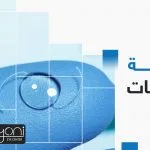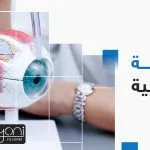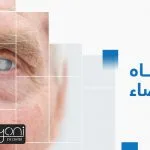Corneal transplantation offers new hope for patients with corneal diseases and vision problems. But what are the techniques used for the procedure? When is it recommended? And does vision really improve after surgery? This article answers all your questions.
The Cornea and Its Problems
The cornea is the transparent, dome-shaped layer at the front of the eye. Its main function is to refract light and help the retina focus it properly. It also protects the eye from dust and external contaminants.
Several factors can damage the cornea, including viral or bacterial infections, foreign body injuries, or other medical conditions such as:
- Keratoconus or astigmatism, where the cornea loses its dome shape and becomes cone-shaped.
- Corneal opacities, which develop after infections and cause scarring and ulceration.
- Corneal perforations resulting from injuries or previous surgical errors.
- Corneal edema caused by endothelial cell dysfunction.
- Fuchs’ dystrophy, a hereditary eye condition.
- In many of these conditions, the cornea may require full or partial replacement. Below is everything you need to know about corneal transplantation.
Full-Thickness Corneal Transplant (PK)
Full corneal transplantation is performed under local anesthesia, though some patients may require general anesthesia based on their health condition. In this procedure, the entire damaged cornea is replaced with a healthy donor cornea. Key details include:
- Before surgery, the ophthalmologist examines the eye thoroughly, including eye pressure, retina evaluation, and vision assessment.
- The surgeon obtains a donor cornea from certified eye banks. The cornea must be completely healthy and taken from a recently deceased donor.
- The procedure takes about one hour and is completely painless.
- There is no need for tissue matching between the donor and the patient because the cornea contains no blood vessels. However, the doctor will prescribe medications to reduce the risk of rejection.
Partial Corneal Transplant (DALK / DSEK / DMEK)
In partial corneal transplantation, the surgeon replaces either the front or back layer of the damaged cornea—depending on the affected area—with healthy donor tissue.
Femtosecond Laser Corneal Transplant
In this modern technique, the surgeon uses femtosecond laser technology to precisely cut both the damaged and donor corneas. This creates a perfect match and significantly reduces the risk of postoperative astigmatism.
Success Rate of Corneal Transplant
The success rate of corneal transplantation is approximately 90%. Overall results depend on the patient’s condition and how the body responds to the new cornea. Only around 10% of patients may experience graft rejection.
Recovery After Corneal Transplant
Your vision may be slightly blurry during the first few weeks after surgery, but it gradually improves and reaches its best level within 6 months.
Postoperative Instructions
Your surgeon will provide essential guidelines to follow after returning home. These include:
- Using antibiotic eye drops to prevent infection.
- Using steroid eye drops to reduce the risk of graft rejection.
- Wearing an eye patch.
- Avoiding rubbing or pressing on the eye.
- Wearing sunglasses when exposed to sunlight.
- Avoiding strenuous exercise or lifting heavy objects during the first week.
Best Corneal Transplant Specialist in Dubai
At Sharif Eye Centers – Dubai Healthcare City, our team of highly skilled cornea and refractive surgery specialists provides advanced corneal transplant procedures with the highest safety standards and cutting-edge technology.
Sharif Eye Centers in DHCC is renowned for expertise in:
- Advanced corneal transplant surgeries
- Refractive vision correction
- Management of keratoconus and corneal diseases
- State-of-the-art diagnostic and surgical equipment
Experiencing corneal issues? Book your consultation at Sharif Eye Centers – Dubai Healthcare City for comprehensive examination and safe, effective treatment.
Procedure Details
Post-Surgery Instructions
- No exposure to dust for 5 days to prevent infection.
- No eye rubbing for one week.
- No makeup or eyeliner on lashes or eyelids for one week.
- No contact lenses for two months.
- No football, swimming, or contact sports for one month.
- Face washing and showering allowed after 2 days—without rubbing the eye.
- Praying (prostration) allowed after 1–2 days.
- Using mobile, computer, or TV allowed from the next day, but avoid eye strain in the first week.
Surgery Duration
30–60 minutes.
Required Tests
- Refraction test (eyeglass prescription)
- Pentacam corneal imaging
You may complete these tests before traveling and send them via email or mobile.
Recommended Rest Period Before Traveling
10 days.






